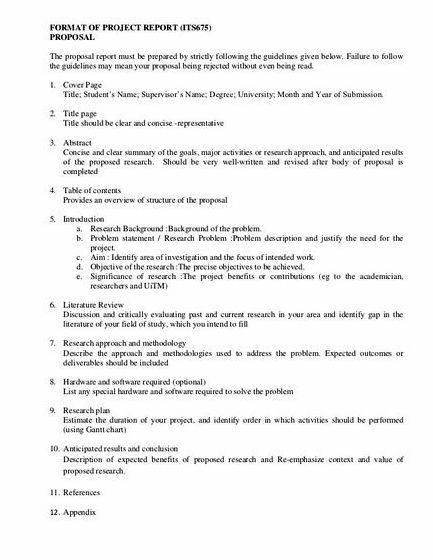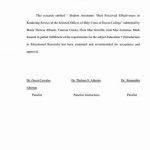Writing an outline will help you to structure your thesis proposal and, in a more general sense, your work on the senior thesis project. Another purpose is to show us that you have identified a project that makes sense to you (and us) and that you have a clear plan of attack.
Some guidelines:
- follow the structure of the thesis proposal
- you may replace section titles by more specific ones and include sub headers
- fill in complete sentences or fractions of sentences, or keywords
- refer to at least 2 key references in your introduction
- length of outline should be at least 2 pages
- if you want to fill in more details in any of the sections, please feel free to do so, this will have the advantage that you will get another round of feedback from you research mentor and seminar advisor
Factors influencing the concentrations of particulate matter in a New York City apartment
Josephine Doe, Environmental Science Department, Barnard College, 10/30/2000
Research mentor: Steve Chillrud, LDEO, chilli@ldeo.columbia.edu
Seminar Advisor: Martin Stute, Env. Sci. Dep. BC, martins@ldeo.columbia.edu
Introduction
- Indoor/outdoor air
- Most studies focus on outdoor air, however we are typically spending most of out life indoors
- A few studies performed so far show how outdoor PM controls indoor PM, but that there are also sources of indoor PM, such as cooking, cleaning, and resuspension of PM by indoor activities (Long et al. 2000)
- Basic characteristics of particulate matter
- Particulate matter (PM) refers to solid and liquid colloidal particles suspended in the air.
- Particle size spectrum and definition of TSP, PM10, PM2.5.
- Sources of particulate matter and their characteristic particle size and chemical composition (Spengler and Wilson, 1996)
- Health effects
- Mechanisms and penetration of different size particles into the human body
- The Health Effects Institute estimates that each year about 60,000 people die prematurely from cardiopulmonary causes linked to particulate air pollution (HEI, 2000).
- There is also a increasing trend in occurrences of asthma cases, in particular in NYC
- Indoor/outdoor PM experiments in NYC
- Summary of prior work performed on this topic in NYC
Thesis statement
- I am planning to study the processes controlling indoor PM in my own apartment at Barnard.
- I suspect that indoor particle concentrations will be high and correlated with outdoor PM and indoor activities because
- the outdoor PM concentrations are high in NYC (Amsterdam Ave.) and windows in my fairly old (off campus) apartment are leaky,
- I do a lot of cooking,
- I allow my friends to smoke in my apartment.
Approach/methods
- The indoor/outdoor gas exchange rate will be determined by adding a small quantity of SF6 into the air and subsequent monitoring of the concentration drop-off due to exchange with outside air with a gas chromatograph.
- An optical particle monitoring devices will be used that measures indoor and outdoor PM concentrations and particle size distribution.
- Careful records will be kept on activities inside the apartment, such as walking, cooking, smoking etc.
- The experiment will run for one week.
- The resulting PM concentration time series will be modeled with a simple 1-box spreadsheet model.

Preliminary results and discussion
- The experiment will be conducted in mid November.
- I expect to be able to include raw data in the thesis proposal.
- My research mentor and I have tested the PM equipment using ambient atmospheric air outside of the LDEO Marine Biology/Seismology laboratory. We saw major spikes in concentrations when holding a burning piece of paper near the intake of the instrument.
- The SF6 gas chromatograph was also tested but did not show a linear response when exposed to SF6 standards of know concentration (see enclosed graph). We do not currently know what the problem might be. My mentor hopes to be able to fix the problem during the next week.
Work plan (gantt chart )
- Sep 10 – Oct 15: Background research
- Oct 10: Discussed senior thesis (Angela’s on ozone at Westpoint) with advisor
- Oct 17: Initial tests of the equipment
- Oct 30: Outline of thesis proposal handed in
- Nov 1-15: check of the gas chromatograph and calibration of the instrument, discuss scientific article with advisor (Long et al. 2000)
- Nov 17: set-up of equipment in apartment
- Nov 19-26: performance of the experiment
- Nov 20: draft of thesis proposal due (will be given to mentor a few days before)
- Dec 11: final thesis proposal due (will be given to mentor a few days before)
- Jan 1-10: repetition of experiment, if not successful in first attempt
- Feb 1-10: Modeling of results
- Mid-March: first draft handed in to mentor and advisor
- End of April: final thesis submitted
Implications of research
- If successful the experiment will shed light on the typical exposure of a Barnard student to indoor PM.
- The measured exposure can be translated into a an estimated additional health risk.
- If appropriate, recommendations will be made regarding indoor PM reduction strategies, such as elimination of PM sources, frequent venting of the apartment, or purchase of air filters.
References
HEI (2000) HEI what’s new page. The Health Effects Institute. healtheffects.org/news.htm Viewed 10/12/00.
Long, C.M. Suh, H.H. and Koutrakis (2000) Characterization of indoor particle sources using continuous mass and size monitors. Journal of Air Waste Management Association, 50, 1236-1250.
Spengler, J.D. and Wilson, R. (1996) Particles in our air: Exposures health effects. Harvard University Press, Cambridge, MA, 300pp.






 Thesis proposal sample doctors note
Thesis proposal sample doctors note Case study thesis title proposal on education
Case study thesis title proposal on education Msc thesis proposal sample pdf
Msc thesis proposal sample pdf Fusarium wilt of tomato thesis proposal
Fusarium wilt of tomato thesis proposal Sample cover page thesis proposal
Sample cover page thesis proposal






